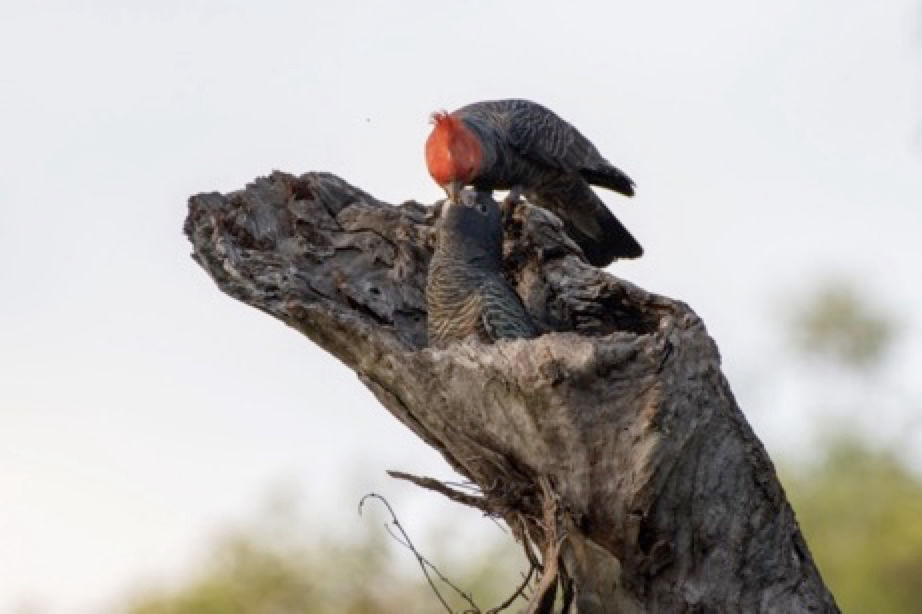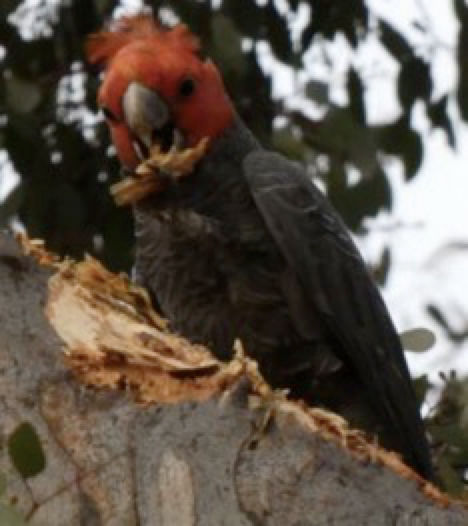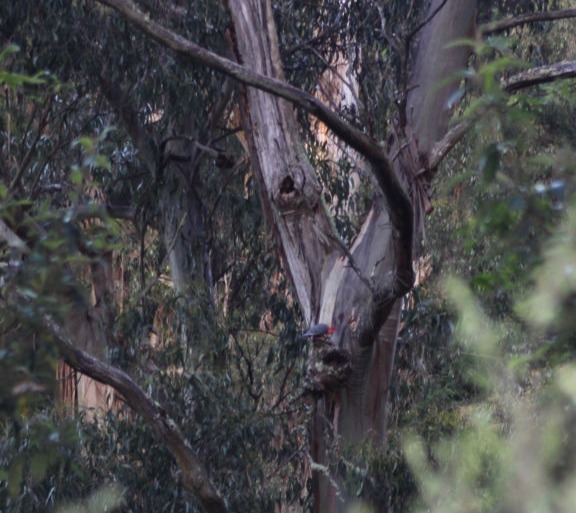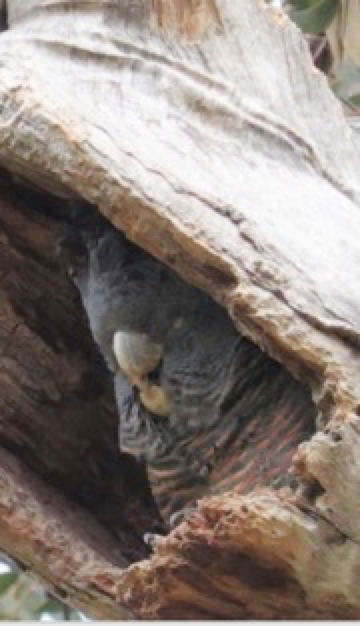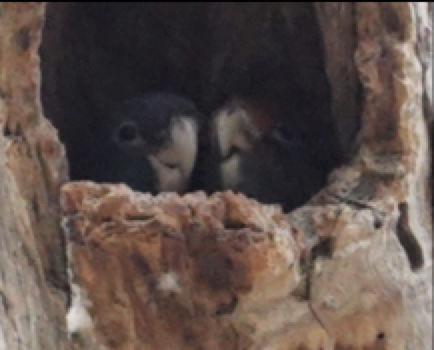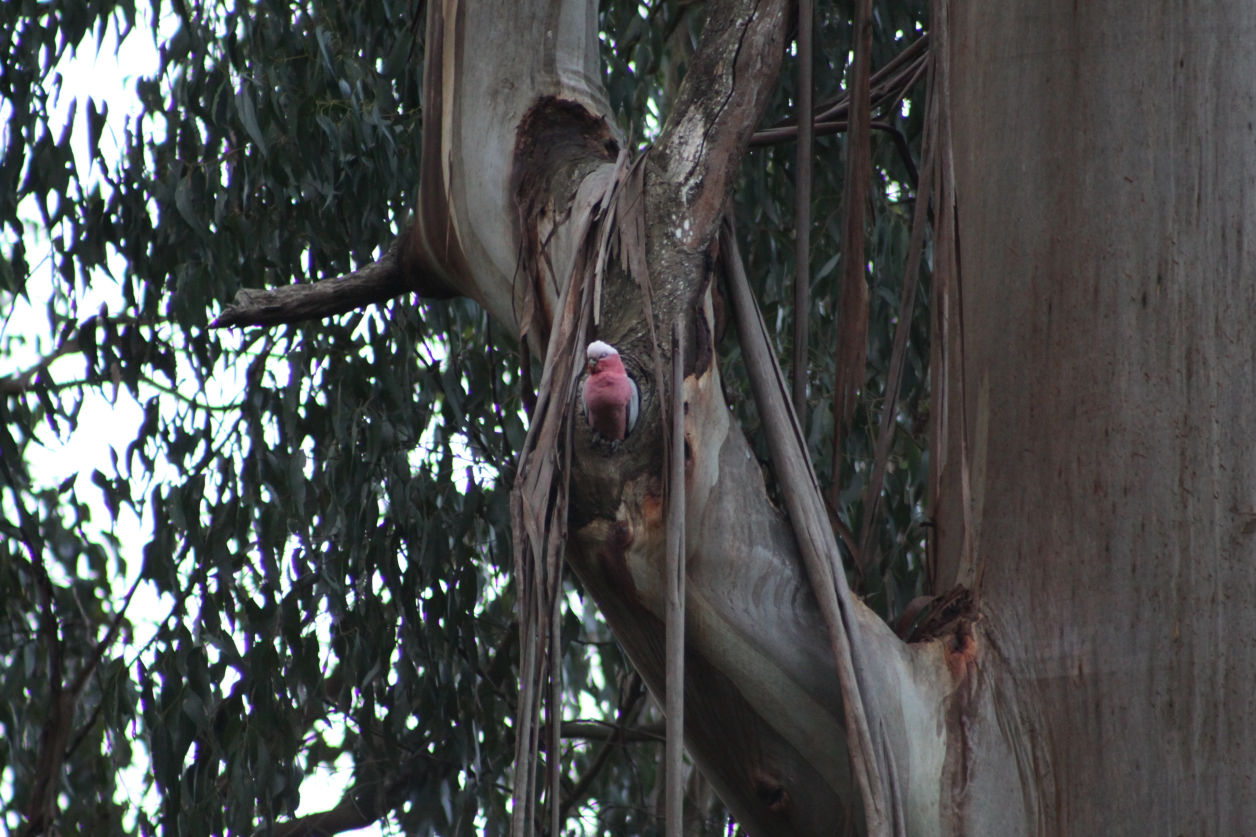Fledging
(December - January - February)
The average depth of a Gang-gang hollow in Canberra is
55cm (range 15-129* cm, n=27).
*Note the
maximum ‘depth’ was of a site situated in a spout.
The
deepest measurement in a trunk was 75cm. When
chicks are getting near fledgling, parents encourage
them to climb to the hollow entrance by feeding them
there. Chicks will stay perched at or just below the
hollow entrance and are visible over a 3-11 day period,
just prior to fledging. The average is 7 days per chick.
Longer visibility times usually involve multiple chicks.
Thus the window in which a nest hollow and number of
chicks raised can be confirmed purely by observation is
short.
In Canberra most chicks are first observed
between Christmas and 15 January but has occurred
from 8 December to 26 February. Time from laying to
fledging varies from 61 to 79 days. In Campbelltown and
Moruya, chicks were observed in the first week of December, while in Melbourne a pair of chicks was first observed in the first week of January.
South Gippsland, Turtons creek area has seen fledglings as late as the end of January.
Behaviours/signs to look out for:
Chicks begging from inside hollow can sometimes be heard.
Parents perched on hollow with head in hollow, body or at least head
rocking rapidly.
Heads of chicks appearing above hollow entrance. Gang-gangs usually
have between 1-3 chicks per nest with two being the most common. Chicks can develop at different rates so not all may
be visible at one time. Thus determining the number
and gender of chicks at a nest hollow should include multiple visits – preferably two a day once chicks are visible.
At least one adult and usually both are present at
fledging, seemingly encouraging the young to leave the hollow through calling, being close by, making repeated short flights from the hollow and if the young follow, rewarding them with food. This process can take a number of days.
Chicks do not return to a hollow once fledged.
